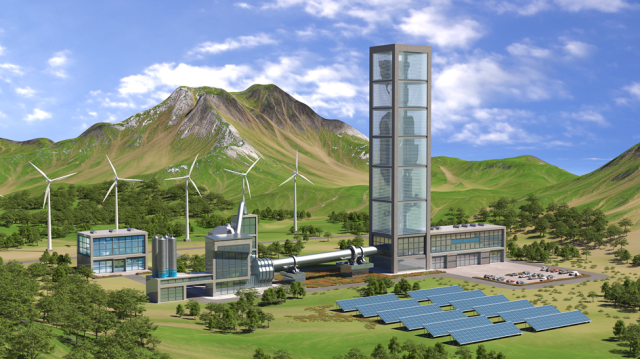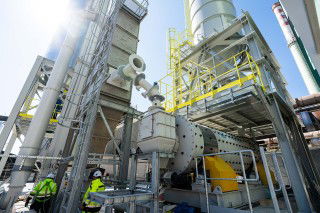The four European cement manufacturers Buzzi Unicem-Dyckerhoff, HeidelbergCement AG, Schwenk Zement KG and Vicat plan to investigate the industrial-scale use of Oxyfuel carbon capture technology in cement production in a demonstration plant.
Hence, the research company "CI4C - Cement Innovation for Climate" was established. The aim is to capture 100 per cent of the CO2 and use it with the help of renewable energies to produce so-called 'refuels', ie climate-neutral synthetic fuels such as kerosene for the aviation industry.
Dr Markus Sauer, senior proposal manager, said: "The research company CI4C and thyssenkrupp are currently investigating the use of our polysius® pure oxyfuel technology in a demonstration plant. Working with our long-standing customers, we would be delighted if we could demonstrate the efficiency of our technology for the first time on an industrial scale. By using this technology, the cement industry could significantly reduce its process-related CO2 emissions and thus make an important contribution to climate protection."
The production of cement releases large quantities of carbon dioxide (CO2). Only a third of these CO2 emissions result from the combustion of fossil fuels such as coal or petcoke, while the biggest share is released by the calcination of limestone. Depending on quality, limestone – the main component of cement – consists of 35 per cent to 44 per cent CO2.
Luc Rudowski, head of innovation at thyssenkrupp Industrial Solutions, Business Unit Cement Technologies, said: "As part of our #grey2green journey we are developing technologies and solutions for sustainable cement production without losing sight of plant profitability and productivity. One example of this is the newly developed polysius® pure oxyfuel technology for optimum CO2 separation.
The Oxyfuel technology replaces ambient air in the clinker production process with pure oxygen introduced into the front zone of the cooler. As the nitrogen content of the air is no longer present, the CO2 concentration in the kiln exhaust gas can be increased to up to 100 per cent. This much more efficient CO2 separation serves as the basis for the downstream utilisation or storage of carbon dioxide.
Dr Georg Locher, who leads R&D explained: "With the second-generation polysius® pure oxyfuel process, exhaust gas recirculation can be eliminated. Another advantage is that existing kiln plants can also be retrofitted with this process."

polysius® pure oxyfuel: next step world’s first industrial application
